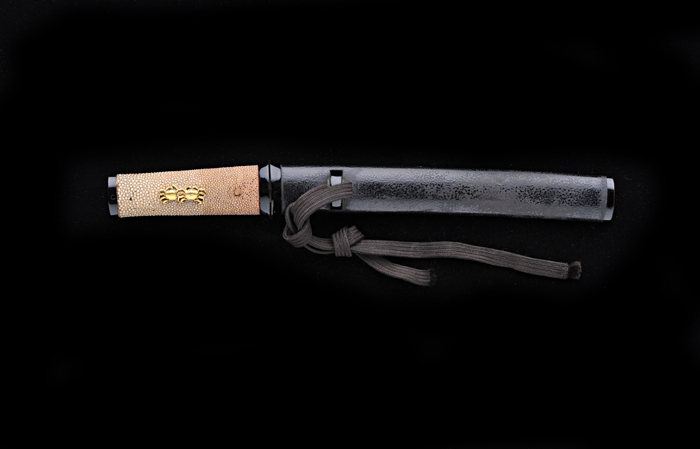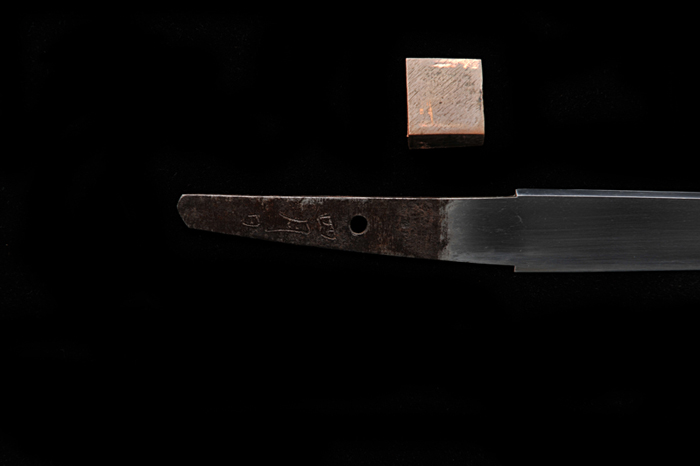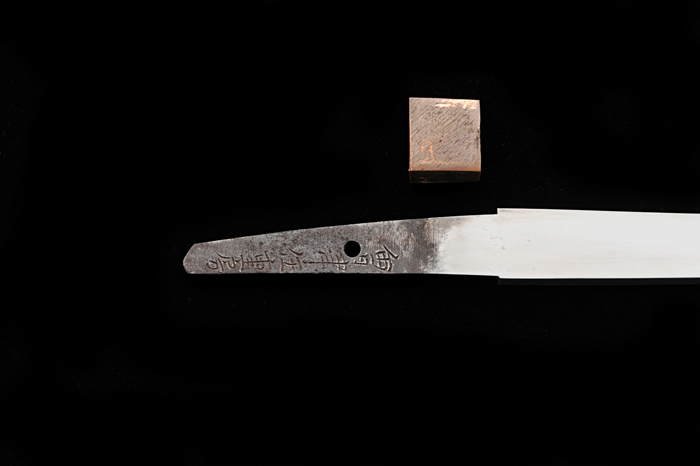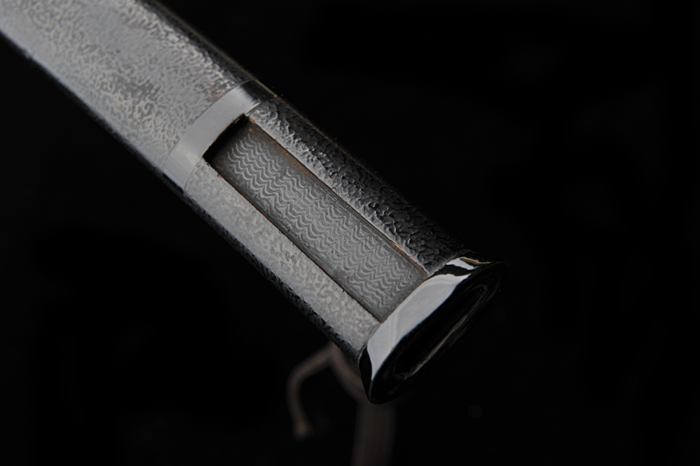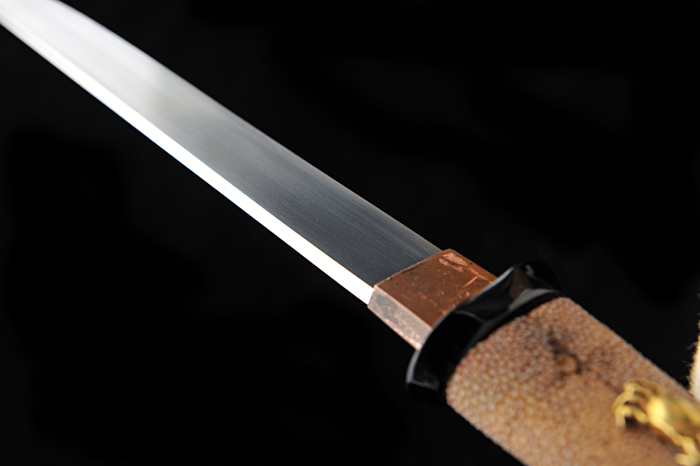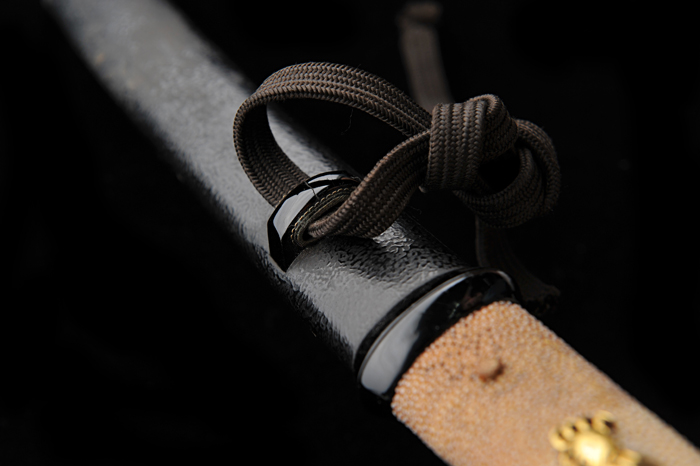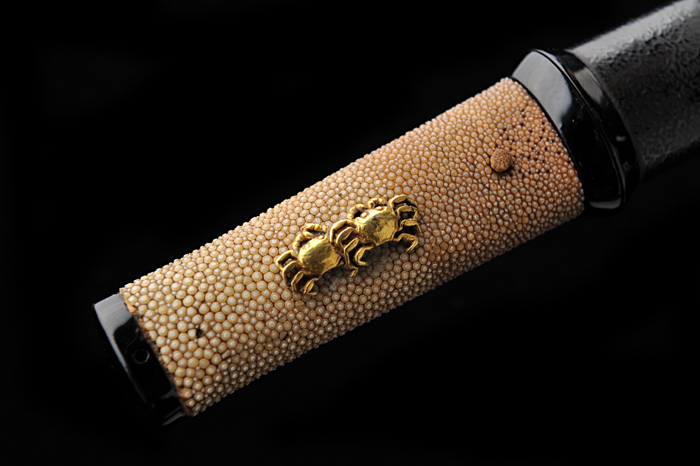Tanto by Shigefusa Kaiken (Late Edo Period, 1800-1867)

This sword has been SOLD. CLICK ON ALL IMAGES for extreme closeups of this magnificent sword.
Type: Tanto with Aikuchi mounting (no tsuba)
Swordsmith: Shigefusa (signed on nakago, tang)
Period: Late Edo Period (1781 – 1867)
Length: 15.7cm
Certification: NBTHK Tokubetsu Kicho Paper issued by the ‘Society for the Preservation of Japanese Art Swords’. This certification states this this is a genuine antique Japanese sword of worthy significance.
Included: Tanto sword, saya (scabbard as shown on this page), beautiful Japanese silk material bag, maintenance kit, certification paper, and all documentation to legally and safely export this sword from Japan.
Price (cash or direct deposit): 280,000 yen (~$3500)
Description:
This little treasure is made by Shigefusa about 150 years ago in Aizu, which is now Fukushima Prefecture. Fukushima is the third largest prefecture in Japan, and one of its least densely populated. The prefecture is divided into three main regions: Aizu in the west near the coast, Naka dori in the centre and Hama dori in the east. Aizu is mountainous with snowy winters, while the climate in Hama dori is moderated by the Pacific Ocean.
All mountings and accessories are also from Late Edo Period. The hamon (temper line) is suguha (straight line), and the polish and condition of the blade is fabulous. A very impressive itamehada (wood grain body) was designed for a smooth cutting performance.
It is interesting to note that the gold crabs are symbolic of the great Ninja warriors because they walk sideways, just like the Ninja. As a matter of fact, the wife of Hatsumi Yoshiaki who is a modern-day Ninja was going to buy this piece since this sword has a crab menuki that adorn the sharkskin handle.
This is a fine example of a Kaiken tanto (dagger). Kaiken were carried by men and women of the Samurai class in Japan. It was useful as an indoor weapon when the long katana and intermediate wakizashi were inconvenient to swing. Women also carried Kaiken in their kimono obi for good luck, protection and rarely for jigai (suicide).
In Samurai circles, the bride received Kaiken as part of her wedding gifts. Many of these daggers had black-lacquered handles and matching scabbards. They could be carried in a pouch of brocade with a drawstring for easy access. In modern times, Kaiken are still a thoughtful part of a traditional Japanese marriage.
The political climate in Aizu was often very martial even in peaceful times. One example is the Samurai of Aizu had the responsibility of patrolling the coasts to provide defense against attack after the Russians invaded Hokkaido in 1806. Matsudaira Katamori of the Aizu clan was appointed protector of Kyoto in 1862.
The Battle of Aizu (会津戦争) was fought in northern Japan in autumn 1868, and was part of the Boshin War. The Boshin War was a civil war in Japan, fought from 1868 to 1869 between forces of the ruling Tokugawa shogunate and those seeking to return political power to the imperial court. It was the culmination to the end of the Edo period (and the feudal system) hence started the Meiji Restoration. Aizu was known for its martial skill, and maintained at any given time, a standing army of over 5000. It was often deployed to security operations on the northern fringes of the country, as far north as southern Sakhalin. Also, in the period immediately before, during, and after Commodore Perry’s arrival, Aizu had a presence in security operations around Edo Bay.
A sword such as this is all in the details. It was created in the month of April (as engraved on the flip side of the nakago (tang). April is considered a month of fresh starts and new beginnings as the sakura (cherry blossoms) traditionally bloom at the start of the month. Notice the intricate metal work around the loop where the silk thread is fed through. Samurai class enjoyed and appreciated this type of detail as it would go unnoticed by passers by, so as to not gather attention.
This is a significant tanto with an extraordinary background. It is a discreet and meaningful souvenir from Japan. It comes highly recommended.



